Osa Gold
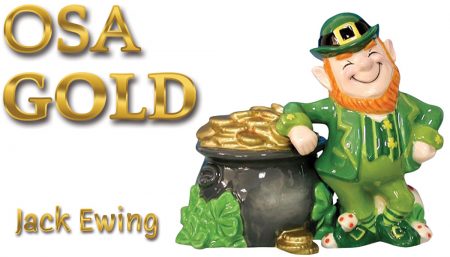 If you saw a small Irish man with a beard and bushy eyebrows who lives in the forest, loves the color green, and has a passion for gold you might think he was a “Leprechaun”. But if that forest happened to be on the Osa Peninsula in Costa Rica, more than likely it would be my good friend Patrick J. O’Connell, commonly known as “The Goldwalker”. Unlike the Leprechaun he is not the keeper of the pot of gold at the end of the rainbow, but he has lived the most extraordinary life of anyone I have ever known, walking from one end of the Osa to the other for 26 years buying gold.
If you saw a small Irish man with a beard and bushy eyebrows who lives in the forest, loves the color green, and has a passion for gold you might think he was a “Leprechaun”. But if that forest happened to be on the Osa Peninsula in Costa Rica, more than likely it would be my good friend Patrick J. O’Connell, commonly known as “The Goldwalker”. Unlike the Leprechaun he is not the keeper of the pot of gold at the end of the rainbow, but he has lived the most extraordinary life of anyone I have ever known, walking from one end of the Osa to the other for 26 years buying gold.
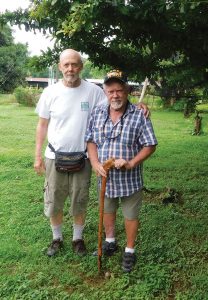
In 1964 Patrick and three friends drove to Costa Rica in a 1958 Dodge panel truck. All were veterans of the Korean war and out for adventure. They came to Costa Rica for the hunting. For three years he stayed in the Talamanca mountain range in southern Costa Rica near a place called Potrero Grande. Then Patrick moved to the Osa Peninsula where the hunting was spectacular.
As it is today the Osa of the 1960s was one of the most biodiverse areas on the planet but that is where the similarity ends. At that time there was no national park, no tourism, no roads, and most of the residents were fugitives from the law. After the civil war of 1948 many of the soldiers from the losing side fled to the Osa to escape execution. Additionally criminals of all sorts took advantage of the remoteness of the peninsula and went there to escape punishment. It was a place of exile. No criminal act was terrible enough to bring the police to the peninsula. If someone was killed in a barroom brawl the others just dragged the body outside, and in the morning someone would bury it. The government didn’t care.

 When I first visited the Osa in 1972 we flew into a short gravel air strip in Puerto Jiménez. The small town consisted of a couple of bars, a pulperia (general store) and even a gas station. All of the fuel came by barge in 55 gallon drums. There were a few cattle ranches along the coast near the town. After finishing our business there we hired a boat to take us to Golfito. The captain told us that once in a while one of the exiles would delude himself into thinking that the police had forgotten about him and try to return to the mainland. What he didn’t know was that a couple of policemen waited for all of the boats, and always captured the unlucky fugitive.
When I first visited the Osa in 1972 we flew into a short gravel air strip in Puerto Jiménez. The small town consisted of a couple of bars, a pulperia (general store) and even a gas station. All of the fuel came by barge in 55 gallon drums. There were a few cattle ranches along the coast near the town. After finishing our business there we hired a boat to take us to Golfito. The captain told us that once in a while one of the exiles would delude himself into thinking that the police had forgotten about him and try to return to the mainland. What he didn’t know was that a couple of policemen waited for all of the boats, and always captured the unlucky fugitive.
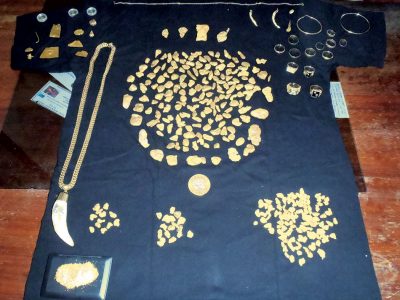
Since pre-Columbian times the Osa has been known as a rich source of gold, and most of the inhabitants at the time when Patrick arrived made a meager living extracting the precious yellow metal from the rivers, while living off the land. At first all Patrick did was hunt in the game rich forests of the peninsula and eventually got to know the area like the palm of his hand. He also befriended most of the miners, men with names like Chente, Mico Blanco, Zorro de Agua, Bomba, Chontales, Mico Negro, Carafila, Juan Bravo, Cleaver, Ampia brothers, and Omar. Almost all had at one time murdered someone and decided to live a life of exile rather than go to prison. Living in the jungles of Osa and extracting gold from the rivers was a hard life, but these men preferred it to living behind bars.
In the late 60s the options for selling gold were limited. The international price of gold was only $35 per Troy ounce, and the few buyers who did come around gave the miners a pittance for their hard earned gold. In the early 70s the international gold markets got an enormous boost. First the price of gold in the US was deregulated and then all sanctions on American citizens owning or trading gold were lifted, and the precious metal became a commodity just like corn, cotton, or coffee. From that time forward it was listed on the New York Commodities Exchange. The price of the Osa’s only product began a unprecedented ascent reaching a value of $850 per Troy ounce by 1980. Gold is measured in Troy ounces. One Troy ounce is 30.1035 grams, while the commonly used Avoirdupois ounce is only 28.3495 grams.
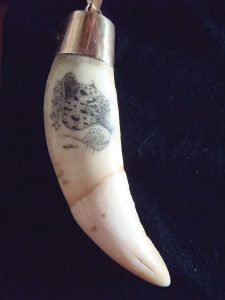
Patrick began his life as a gold buyer about the same time the price began its historic rise, and everyone thought that he was the one who made it happen. They also thought that if anything happened to him the price would return to its former low level. From that point on his safety was their concern. He walked everywhere where there were miners, paid a fair price for their gold, never cheated anyone, and taught them how to find out the international price of gold by listening to the daily market reports on a portable short wave radio. Most of them became his friends.
Notwithstanding the above everyone knew that Patrick carried large sums of cash and gold in his backpack, and he knew that it was a big temptation for some of the miners. He lived by several simple rules designed to keep him alive. He never told anyone where he was going next, and if asked he lied. In the forest he constantly watched and listened and felt confident that he could evade or out walk anyone who tried to follow him. He knew all of the trails well and the best places to hide or out smart someone who might follow. On the beach, where there was no place to hide, he only walked at night and never used a flashlight.
Even though the miners were receiving much more money for their gold, most weren’t living any better than before. The majority of their earnings went for booze. There were cantinas in Puerto Jimenez, Rio Oro, Carate and in several other locations around the Osa. If someone found a big nugget and sold it for a small fortune, the whole bundle was spent on a big party that lasted until all of the money was gone. Then they would all go back to mining until the next big windfall.
One of the most famous cantinas, located in Carate, was owned by a very tough lady named Doña Berta, who also happened to be Patrick’s mother-in-law. Everyone went there to drink, but seldom caused problems for fear of Doña Berta’s wrath, and her shotgun. One notable exception was when Juan Bravo shot and killed Chino Ahoi while drinking in the cantina. There was bad blood between the two, but Chino figured Juan Bravo wouldn’t cause any trouble at Doña Bertas. He was dead wrong.
Juan Bravo was rumored to have killed several other miners on the Osa, but nobody knew for sure. Patrick eventually built a pulpería and bar near the Rio Tigre, and his wife Roxana managed it. On several occasions Juan Bravo walked into the bar, headed straight for Patrick, pulled out his revolver, pointed it at Patrick, and said: “Here. Take care of this for me. I’m gonna go drink, and the devil gets in my head when I drink”. Like the other miners Juan Bravo never talked about his past, but it was commonly believed that his father was very religious, and he had been raised in a strict religious household.
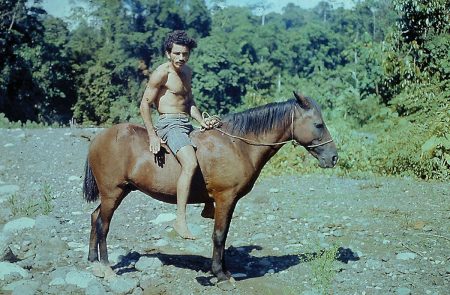
Patrick has enough stories to fill several books, but the one that seems to upset him in the telling is about a money lender named Don Transito who apparently had a heart attack while bathing in a stream. Some miners found him there either unconscious or dead. Pat walked up shortly thereafter and they had Don Transito laid out on a wooden platform with his hands tied together and his jaw tied shut. When asked what happened one of the men said they had found his body down by the stream and were getting ready to bury him.
Patrick looked at the body and noticed that the fingers were twitching. “I don’t think he’s dead,” said Patrick. “Look. He’s still moving.”
“Oh he’s dead alright”, said the miner with a look that told Patrick that any further comment would be unwelcome. Patrick looked at the three miners, all with machetes at their sides, and all of whom owed money to Don Transito. He turned, and walked away.
One of the most violent incidences to take place on the Osa was perpetrated by a miner named Cleaver in the mid-80s. By that time there was a crude road to the Osa and an occasional visit from the police. Cleaver was from Guanacaste and rumor had it that he had killed his wife and later fled to the Osa. One night he was sitting in a bar drinking when another miner walked over, picked up Cleaver’s drink, drained it, and sat down. Cleaver stood up pulled out his machete, made a deep cut on one of the man’s shoulders and then brought the big knife down hard on his thigh, cutting it all the way to the bone. Blood gushed out of the cut, and the man quickly keeled over and died. Cleaver turned to the bar and asked if anyone else wanted to try to steal his drink. Then he left and went into hiding. The police did a routine investigation but didn’t mount a search for Cleaver. The captain told Patrick that if he or any of the other miners saw Cleaver that they should kill him and throw his body in the river. Some time later three of the dead man’s relatives pursued Cleaver and got him cornered near Patrick’s store. The dead man’s brothers were unarmed as was Cleaver who looked crazed and half-starved and was throwing rocks at his pursuers. Patrick walked out of the store and pointed a revolver at Cleaver with every intention of killing him. Cleaver started crying, ran up to Patrick, threw his arms around him, and cried “Patrick my friend”.
“I just couldn’t kill him,” reminisced Patrick. “I told him to get out of there.” Cleaver ran back into the jungle. Rumor has it that several days later the dead man’s brothers caught up to him deep in the forest and killed him. He was never seen again.
Unlike the Leprechaun Patrick isn’t the keeper of the pot of gold at the end of the rainbow, but during his life on the peninsula he has bought and sold an enormous amount of gold and seen a lot more. The biggest nugget he has ever seen weighed four pounds. The miner offered it to him, but he didn’t like it. There was a lot of quartz mixed with the gold and it had an ugly shape. On another occasion he was offered a very nice one kilo nugget but didn’t buy it either. The miner was showing it around and talking too much, and Patrick figured it was too risky. The largest nugget he ever bought weighed 10 Troy ounces. In fact he bought two of them that big. The prettiest nugget he every bought was in 1979, weighed 79 grams and cost 79 colones per gram. Nuggets brought a premium price and Patrick cultivated a number of special clients who loved to buy them. But the bulk of the gold he bought was fine gold, sometimes called gold dust, and this was sold to the bank at the market rate.
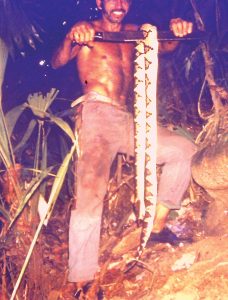
During his hunting days Patrick killed three pumas and one jaguar. “I didn’t want to kill the jaguar, but it was killing a friend’s cattle, and he begged me to hunt it down.” They chased the big cat with dogs, got it treed, and Patrick shot it out of the tree. Once Patrick started buying gold he only hunted for food for the table. During all of his years of hunting and gold buying on the Osa Peninsula Patrick saw many large snakes, but was never bitten. Then when in his 60s and on a camping trip with his son he was bitten on the toe by two recently hatched terciopelo vipers at the same time. By the time they got him to the hospital in Golfito, six hours later, he was in critical condition. They were able to save his toe and foot, but the bite never completely healed. Now at 78 he needs a cane to walk, but even so you just can’t keep him down. Now Patrick dedicates his free time to kayaking with his dog “Kayak” standing at the bow.
Patrick married Doña Berta’s daughter Roxanna. Together they had four children. He made sure that all four had US passports and were dual citizens. All went to school in Indiana while staying with his family. He is very proud of all the kids, but especially the youngest girl, Rocki. She is an amateur boxer and Ringside World Champion at 101 pounds, pin weight.
In recent years Patrick formed a group called Golfito Veterans (GOVET) which includes American Legion, Veterans of Foreign Wars, Active Military members, and Korean Vets. The group has helped over 200 students in 30 schools in the Sierpe River school district. They have also donated 45 wheel chairs, numerous walkers, canes, and men’s diapers to the needy in the Golfito area. Their money is raised from yard sales, Super Bowl Party, and all of the profits from the book Goldwalker by Scott Anderson. The book is available from Amazon in both hard cover and kindle formats. It is a fascinating biography that covers many of the years that Patrick lived on the Osa Peninsula.
